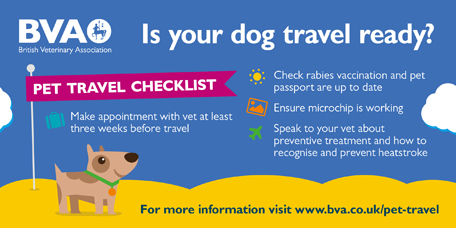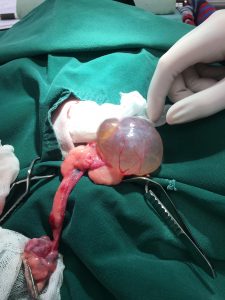
Canine Donor Programme
Similar to the human blood service, dog owners kindly register their much loved canine companions to give blood at one of The Pet Blood Bank’s many sessions across the country.
After each session, the blood is taken to our processing centre in Loughborough where it is separated into red blood cells and plasma products, and then stored ready for despatch.
The Pet Blood Bank UK run an average of five sessions a week at veterinary practices and kennels, with over 8,000 lifesaving donors registered with the charity. Last year, we sent out over 5,000 units of blood and as transfusion medicine advances, the demand continues to grow.
Every unit of blood can help save four other lives, saving thousands of lives every year.
At Oakhill Veterinary Centre, we support the work the Pet Blood Bank does and we offer our veterinary centre at Goosnargh as a venue. Our next blood bank session will be on Saturday 6th January and we need more owners to bring in their dogs for this great cause.
To get involved, please register your dog using the Pet Blood Bank’s online form, then a member of their team will be in touch to confirm your details and discuss arranging your first appointment. After this, they will send out a Donor Information Pack which includes a Consent Form and a Donor Health Check Form. Please complete these and bring them with you to your appointment along with your dog’s vaccination record.
When you come along to a Pet Blood Bank UK (PBB) donation session, you will be greeted by the staff who are hosting the session. They work on an appointment system, much like your veterinary practice and be given an appointment time convenient to you beforehand.
Your appointment is split into two parts:
- Health and suitability check with their fully qualified vet
They will go through the following process with your dog prior to any donation going ahead:
- Undertake a physical examination of your dog and take its health history
- Carefully clip and clean two small areas of your dog’s neck
- Take a small blood sample and run some tests to ensure that your dog is fit to donate
- Microchip your dog if it is not already microchipped
- Donation
If your dog passes the initial checks, you will be shown to the donation area where a fully qualified phlebotomist will collect about 450ml of your dog’s blood.
After donating, we’ll ask you to stay at the donation venue for a small amount of time to allow your lifesaver to have a drink, something to eat and to be observed by our team. Your dog will receive a goody bag which includes an “I’m a Lifesaver” bandana and tag to thank them. They will also get to pick out a toy to take home and we’ll take their picture for their Facebook and Twitter pages!
You are then ready to go home. They advise that dogs rest for the remainder of the day and can go back to their normal routine the following day.
In total, you should allow around 45 minutes for your appointment, although the actual donation process only takes between 5 and 10 minutes.
If you can’t find a donation session near you, please continue to register your dog as The Pet Blood Bank are hoping to hold sessions all over the UK. They need a minimum of 30-40 dogs to be registered for them to hold a session, so please tell your friends to consider registering their canine companion as well so we can hold a session in your area.
We would like to thank the Doggy Dream Team for providing us with the infographic.
Image creative license to DoggyDreamTeam ©








